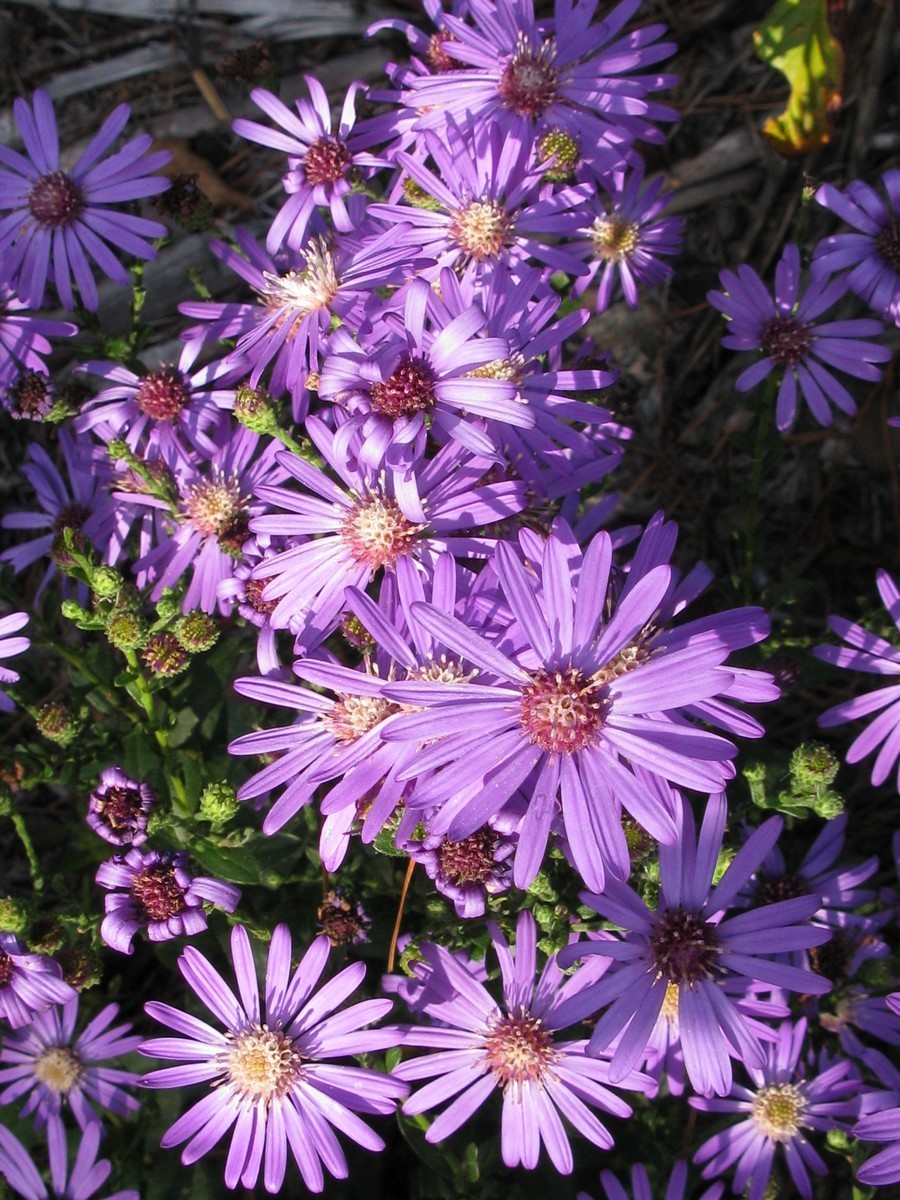The move comes as the U.S. Fish and Wildlife Service, along with the Georgia Department of Natural Resources and other state and federal agencies, advance a large, partnership-based effort to conserve at-risk plants and animals across the Southeast.
"Across the South, we've really put an emphasis on bringing partners together to recover plants, fish and wildlife before they need protection under the Endangered Species Act," explained Fish and Wildlife Service Southeastern Regional Director Cindy Dohner. "It's a strategy that's making great strides, in part because conserving one at-risk plant or animal often benefits others. Conserving Georgia aster habitat conserves habitat for rapidly declining birds like the grasshopper sparrow and eastern meadowlark.
"Proactive and voluntary conservation also benefits landowners, because the actions offer flexibility and help minimize their future regulatory burdens."
Georgia aster, Symphyotrichum georgianum, is a purple flowering plant found in the upper Piedmont and lower mountain regions of Alabama, Georgia, North Carolina and South Carolina. In 1999, the Fish and Wildlife Service made Georgia aster a candidate for inclusion on the federal endangered species list, meaning it warranted being on the list, but other species were a higher priority.
"We've brought together many of the key landowners who can collectively determine the future of this plant," said Dr. Mara Alexander, the Fish and Wildlife Service botanist coordinating this effort to conserve the rare aster. "We've outlined a land management approach that meets their needs, while supporting Georgia aster."
DNR Wildlife Resources Division Director Dan Forster said agency scientists have been searching out and documenting populations since about 2006 to better understand the status of Georgia aster in the state. DNR has also made land management changes, such as increasing the use and frequency of prescribed fire, to restore and enhance habitats, and worked with the Georgia Plant Conservation Alliance on habitat management and outplanting projects to conserve the species.
The Georgia Plant Conservation Alliance is a network of 27 public gardens, government agencies, academic institutions, utility companies and conservation organizations committed to preserving Georgia's endangered flora.
For more information:
§ Georgia aster and this conservation agreement: www.fws.gov/asheville/htmls/conservationissues/Georgia_aster.html.
§ Fish and Wildlife Service Southeastern strategy to conserve at-risk plants and animals: www.fws.gov/southeast/candidateconservation.
§ Georgia rare species profiles: www.georgiawildlife.com/rare_species_profiles

http://accesswdun.com/article/2014/5/275035
